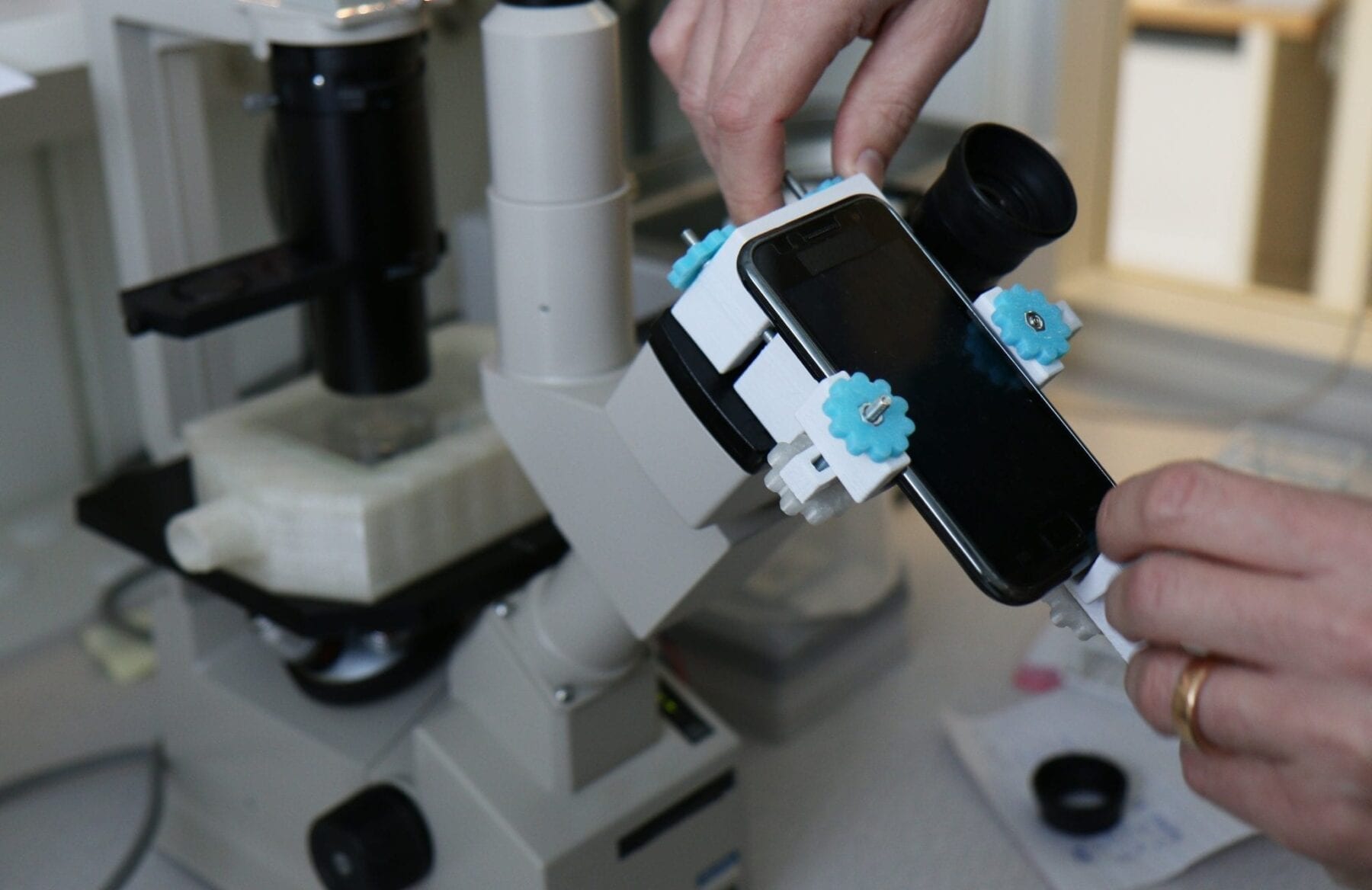
Printing presents an easy, highly scalable, sustainable manufacturing method for space travelers
When humans begin to colonize the moon and Mars, they will need to be able to make everything from small tools to large buildings using the limited surrounding resources.
Northwestern Engineering’s Ramille Shah and her Tissue Engineering and Additive Manufacturing (TEAM) Laboratory have demonstrated the ability to 3D-print structures with simulants of Martian and lunar dust. This work uses an extension of their “3D-painting process,” a term that Shah and her team use for their novel 3D inks and printing method, which they previously employed to print hyperelastic “bone”, 3D graphene and carbon nanotubes, and metals and alloys.

“For places like other planets and moons, where resources are limited, people would need to use what is available on that planet in order to live,” said Shah, assistant professor of materials science and engineering at Northwestern’s McCormick School of Engineering and of surgery in the Feinberg School of Medicine. “Our 3D paints really open up the ability to print different functional or structural objects to make habitats beyond Earth.”
Partially supported by a gift from Google and performed at Northwestern’s Simpson Querrey Institute, the research was recently published in Nature Scientific Reports. Adam Jakus, a Hartwell postdoctoral fellow in Shah’s TEAM lab, was the paper’s first author. Two former Northwestern Engineering undergraduates, Katie Koube, who currently works as an engineer for SpaceX, and Nicholas Geisendorfer, who is now a graduate student in Shah’s lab, co-authored the work.
Shah’s research uses NASA-approved lunar and Martian dust simulants, which have similar compositions, particle shapes, and sizes to the dusts found on lunar and Martian surfaces. Shah’s team created the lunar and Martian 3D paints using the respective dusts, a series of simple solvents, and biopolymer, then 3D printed them with a simple extrusion process. The resulting structures are over 90 percent dust by weight.
Despite being made of rigid micro-rocks, the resulting 3D-painted material is flexible, elastic, and tough — similar to rubber. This is the first example of rubber-like or soft materials resulting from lunar and Martian simulant materials. The material can be cut, rolled, folded, and otherwise shaped after being 3D painted, if desired.
“We even 3D-printed interlocking bricks, similar to Legos, that can be used as building blocks,” Shah said.
Learn more: New Method for 3D Printing Extraterrestrial Materials
[osd_subscribe categories=’3D Printing-5′ placeholder=’Email Address’ button_text=’Subscribe Now for any new posts on the topic “3D PRINTING”‘]
The Latest on: 3D Printing
[google_news title=”” keyword=”3D Printing” num_posts=”10″ blurb_length=”0″ show_thumb=”left”]
via Google News
The Latest on: 3D Printing
- This beginner-friendly 3D printer is the best we've tested - and it's $210 off right nowon May 9, 2024 at 10:26 am
Takes you closer to the games, movies and TV you love Issues delivered straight to your door or device ...
- A Guide to 3D Printing for Healthcare, Today and Tomorrowon May 9, 2024 at 10:02 am
The technology is used by many health systems to create custom implants and models, but how will it be used in medicine as it advances?
- Eplus3D introduces EP-M2050 metal 3D printing system with optional configuration of 64 laserson May 9, 2024 at 7:12 am
Eplus3D has launched its EP-M2050 metal additive manufacturing system, a 36-laser platform which can be extended to 49 or 64 lasers.
- Researchers harness blurred light to 3D-print high-quality optical componentson May 9, 2024 at 7:00 am
Canadian researchers have developed a new 3D printing method called blurred tomography that can rapidly produce microlenses with commercial-level optical quality. The new method may make it easier and ...
- US signs Aerojet to 3D-print hypersonic propulsion system prototypeon May 9, 2024 at 1:44 am
Aerojet Rocketdyne has been given a contract by the US Department of Defense (DoD) to develop a hypersonic propulsion prototype through additive manufacturing. The $22 million contract from the DoD ...
- MTC installs Lithoz CeraFab S65 machine to drive industrial ceramic 3D printing in the UKon May 9, 2024 at 1:24 am
The Manufacturing Technology Centre (MTC), the UK’s national centre for additive manufacturing, has installed a Lithoz CeraFab S65 3D printer.
- New Study Simulates 3D Printing with UAV Swarmson May 8, 2024 at 9:40 am
3D printing is the act of intelligently depositing or solidifying material in an additive sequence to gradually build up an object. This is done using a variety of processes, including dropping ...
- How Stereolithography Works: A 3D Printing Processon May 8, 2024 at 9:18 am
Stereolithography -- also known as 3D printing -- is an amazing technology that allows you to build 3D plastic prototypes almost as easily as you print something on a sheet of paper!
- MIT spin-off Rapid Liquid Print raises $7M for 3D printingon May 7, 2024 at 1:30 pm
MIT spin-off Rapid Liquid Print has raised $7 million in funding for its novel liquid-based 3D printing technology.
via Bing News










